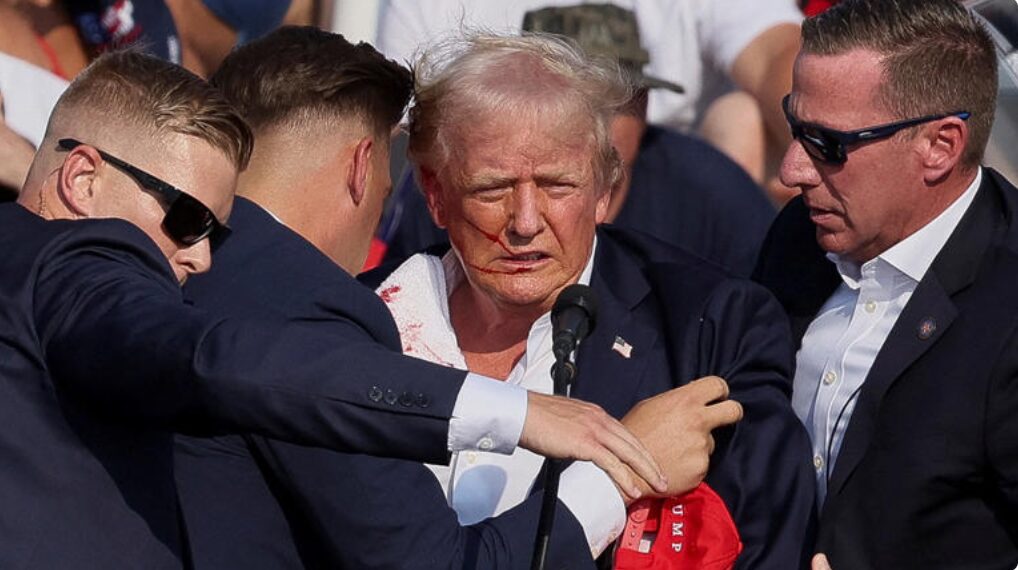Americans from all political backgrounds were confronted with a stark reminder: Donald Trump remains a formidable force not easily subdued. Yet, this fact does little to alleviate the toxic media environment poisoning US politics. It was inevitable. While addressing supporters in Butler, Pennsylvania, Trump was grazed by an assassin’s bullet. The question of how the would-be killer got so close amidst a sea of Secret Service agents is for another day. The real concern now is identifying what incited this act of political violence.
Some commentators pointed fingers at Joe Biden’s reckless remarks on a donor call earlier this month, where he reportedly stated, “I have one job, and that’s to beat Donald Trump… It’s time to put Trump in a bullseye.” Ohio Senator JD Vance, a potential running mate for Trump, echoed this sentiment on X (formerly Twitter), asserting, “The central premise of the Biden campaign is that President Donald Trump is an authoritarian fascist who must be stopped at all costs. That rhetoric led directly to President Trump’s attempted assassination.”
While Vance’s point holds some truth, the media, which gleefully amplifies such dangerous rhetoric, must also be held accountable for the prevailing atmosphere of hate. We frequently hear about individuals being politically motivated, but we must also consider those who are “media motivated.”
Take, for instance, last month’s issue of the New Republic, a left-leaning political journal, which featured Trump depicted as Adolf Hitler with the caption, “American fascism, what it would look like.” On the day of the shooting, however, the journal sang a different tune. Columnist Michael Tomasky wrote, “As I write these words, we don’t know what motivated 20-year-old Thomas Matthew Crooks to try to assassinate Trump. But whatever his motivation, his act is not isolated… We entered a very dark period long ago, and there’s no end in sight.” The hypocrisy is glaring.
The absence of Trump with a Hitler moustache in Tomasky’s article is no surprise. After wading through countless hypocritical pieces lacking self-awareness, it becomes clear that the political landscape is skewed in favor of Democrats. Despite near-equal support for Republicans and Democrats among the electorate, the liberal left’s dominance in the national media gives them a broader reach. Consequently, Democrats trust the media more because it often mirrors their values.
According to a recent Gallup poll, a record-high 39% of Americans have no trust in the media, a number that has risen since 2018. Delving deeper into these statistics reveals a disturbing trend: 58% of Democrats express trust in the media, compared to just 11% of Republicans. It’s no wonder that “propaganda” is a term increasingly used to describe the current media environment, influencing not just news but public perception.
Consider the coverage of the Black Lives Matter protests in May 2020. Amid the chaos following George Floyd’s death, pro-Democrat channels like PBS, ABC, CBS, NBC, and CNN displayed a shocking level of sympathy towards the riots, while only Fox News and a few pro-Republican outlets reported on the violence. CNN faced widespread ridicule for a segment showing a reporter in front of a burning building with the chyron “FIERY BUT MOSTLY PEACEFUL PROTESTS.” Many Americans were unaware that the riots caused between $1 billion and $2 billion in property damage, the highest recorded from civil disorder in US history.
This illustrates the media’s power to twist any story or individual to fit its narrative. Given that the media has long targeted Trump, it’s no surprise that a lone madman nearly succeeded in taking his life. The toxic rhetoric, amplified by a complicit media, creates a perilous environment where political violence becomes increasingly likely. It’s time to hold these purveyors of misinformation accountable for the dangerous consequences of their actions.








